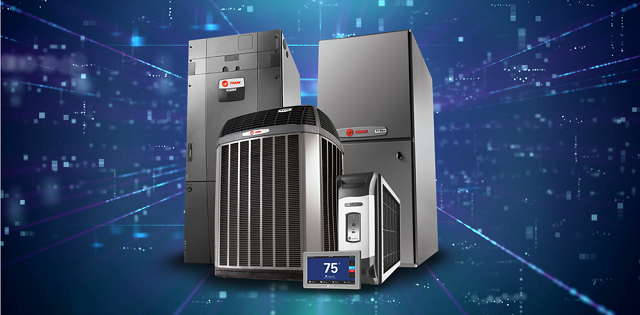Three Key Operating Styles in Forced Air HVAC Systems
In the world of forced air heating and air conditioning systems, there are three fundamental operating styles. While these styles don't directly save money, they significantly enhance indoor comfort. The added features usually make the system more efficient, but that's just one part of the equation. The real benefits are threefold: maintaining consistent air temperatures, reducing humidity, and quieter operation. Let's explore these styles, drawing parallels with cars for a simpler understanding.
1. Single-Stage Systems: The All-or-Nothing Approach
These systems are the industry standard. Picture a car that only has two modes: a complete standstill or racing at 100 miles per hour. That's a single-stage system for you. It powers up to either cool your home to 100 degrees or heat it to zero, regardless of whether such extreme measures are necessary.
While these systems effectively maintain your home's temperature, their short cycles end before properly mixing and dehumidifying the air between rooms. If paired with a zoning system, you may need to "bypass" or recirculate excess air if only one zone is active, which can affect efficiency. Yet, these systems, with 95% efficient furnaces and XR16 outdoor units, often meet or exceed Energy Star standards.
2. Two-Stage Systems: The Middle Ground
Next up, we have two-stage systems. Think of a car that can cruise at a comfortable 70 miles per hour but can speed up to 100 miles per hour when necessary. That's your two-stage system. On mild days, it operates at low speed, ramping up to full capacity on extreme days.
Running at a lower capacity allows these systems to operate longer, promoting better air mixture between rooms and more effective dehumidification. Contrary to what one might think, these longer run times are more cost-effective. The system uses less energy at the lower setting, and by cycling less often, it minimizes the energy-intensive startup process and reduces wear on motors. These systems, with 95-97% efficient furnaces and 16 to 18 SEER outdoor units, typically use 8 to 12% less electricity for air conditioning compared to single-stage units.
3. Modulating/Variable Speed Systems: The Smooth Operator
The final category is variable speed systems. Imagine setting your car's cruise control at 70 miles per hour. It accelerates when climbing a hill and slows down when descending. That's precisely how these systems work, adjusting anywhere from 30% to 100% capacity based on demand.
Unlike other systems that might shut off as the day cools, variable speed systems merely slow down, using less energy at a lower rate. They offer the quietest operation and the most consistent air temperatures, minimizing temperature swings and providing the best dehumidification during the cooling season.
Variable speed systems are also the most efficient option for air source systems, boasting 95-97% efficiency furnaces and 18 to 20 SEER outdoor units. Their ability to adjust airflow helps overcome restrictions in the duct system, ensuring proper air delivery to even the hardest-to-reach rooms.
Understanding these three operating styles can help you make an informed decision about the best HVAC system for your needs, considering both efficiency and comfort. At SS&B Heating & Cooling, we're dedicated to helping you find the best solution tailored to your specific needs. Don't hesitate to reach out to our team of experts for advice or with any questions you may have about these systems.
We're always here to help you achieve optimal indoor comfort.
To schedule services, simply call us at 417-580-9905, or you can conveniently contact us online. We're here to assist you!
Frequently Asked Questions
Tell me more about the Trane XV18 air conditioner

